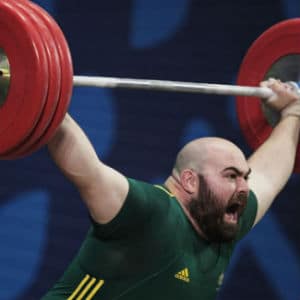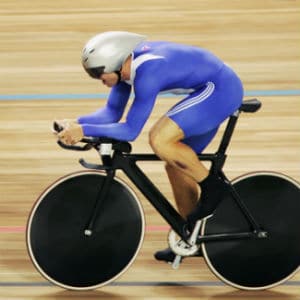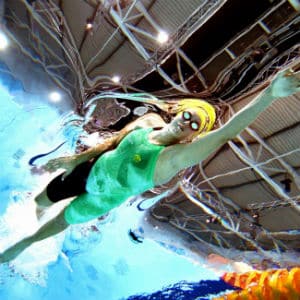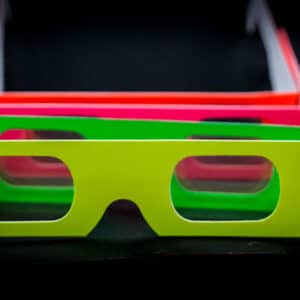We had a great time exploring the science of sports during our Winter Olympics roundup back in February, we thought we’d do it again for the Commonwealth Games 2018! Those of you in QLD must have experienced all the commotion for the past weeks, how exciting!
Here are three sport events at the Commonwealth Games about which I had questions of my own. So I compiled is a list of interesting science facts that I dug up from my research!
Weightlifting

Source: Official GC2018 website
Diet is very important to weightlifters. To get good muscle growth, they would need to eat a lot of protein. But just before a competition, what is needed to power those strong muscles is sugars! An athlete will often “carb-load” by eating plenty of carbohydrate-rich foods which break down into sugars by the body, becoming the energy supply for these muscles.
Weightlifters need intense bursts of energy in order to lift all that weight, so they have to make sure their muscles are up to the task. Muscles contain myoglobin, which like haemoglobin stores and transports oxygen, but for the muscle. The heme part of myoglobin gives it a red appearance, so the redder the muscle the more myoglobin there is to deliver oxygen, for maximum performance.
A weightlifter’s muscles are also very different to those from a long distance runner who would require endurance and stamina. The muscles of a weightlifter tend to have a much higher portion of fast-twitch fibres. This means a lot of power output in a very short amount of time, but the muscle gets tired very quickly. Here’s a great animation explaining the difference between fast- and slow-twitch muscles!
Cycling

Source: Official GC2018 website
Track cyclist wear these special helmets. Unlike the ones we have to wear to protect our heads, these are also elongated and tapers to a point behind the wearer’s head. This is to reduce drag, for that split-second advantage over your opponent!
I’ve always wondered why different cycling events (Track, road and mountain bike) have totally different wheels and tyres. Especially those weird disc wheels for track! Mountain bikes have big wheels with thick rubber tyres. This gives the bike much-needed suspension to absorb forces when going over rough terrain so the athlete won’t have to feel every single bump in the road! Track wheels on the other hand, don’t need this because the race is held on the smooth, polished velodrome floor. They have thin and hard rubber tyres. By sacrificing suspension, track bikes can optimise their speed output by reducing rolling friction.
Mountain bike wheels have spokes, disc wheels for track do not. For an indoor race in the velodrome, a track bike would encounter little air resistance head on if using disc wheels. But imagine taking it outside, a gust of wind from the side would easily blow you over! It is much safer to use wheels with spokes for non-track events.
Yet another difference between these bikes are the gears. Mountain bikes have several gear ratios whereas track bikes are fixed-gear, which means they only have a single gear ratio (They also don’t have brakes, how terrifying!). Gear ratios are all about how many times the wheel turns for every full pedal you make, depending on the combination of gears that are engaged. For mountain biking, the up-and-down terrain means that having different gear ratios would make the cyclist’s life so much easier! This would not be necessary on the velodrome track where it is nice and flat, so the gears get ditched for a lighter construction!
Swimming

Source: Official GC2018 website
Swimmers also wear hats to reduce drag! But many go a step further by shaving off all the hairs on their exposed skin, just to make sure the water can move past their body with as little friction as possible.
Sometimes it seems like all we ever care about in sports is reducing friction, but the direction matters! Unlike other sports such as running or cycling where there is traction between their feet or the tyre and the track or road surface to push the athletes forward, gaining traction in water is difficult. So while the swimmer wants to reduce drag forwards in order to move in that direction as quickly as possible, they also want to increase friction backwards to propel themselves forward…this is Newton’s Third Law of Motion in action!
There are so many subtleties in a swimmer’s technique to get the most distance and speed out of every stroke. One such factor is how fast the swimmer can move their hands like paddles through the water. A swimmer’s arms are like levers with the fulcrum at the shoulders. As the lever rotates around the fulcrum, points farther from the pivot move faster than points closer to the pivot, according to Archimedes’ Law of Levers. So keeping their arms as straight and stretched out as possible will result in the swimmer’s hands moving faster through the water!
Happy teaching,
Check out our Human Body Workshop!

NEW Primary science teaching book!
“Be Amazing! How to teach science, the way primary kids love”



























Comments